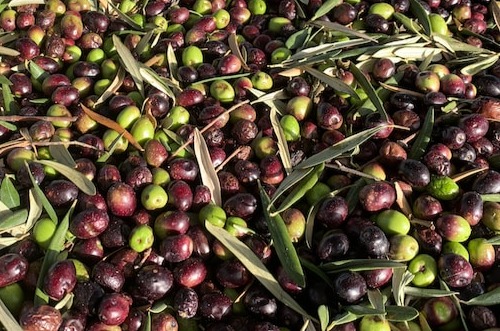W49 Olive & Olive Oil Update: Challenges and Responses in the Olive Oil Sector From Supply Shortages to Price Surges

Escalating Challenges from Ukraine War, Rising Costs, and Global Production Slump in Spain
In the post-Covid era, the olive oil sector faces severe consequences from the war in Ukraine, with soaring energy costs impacting the industry. The Spanish Association of Olive Municipalities (AEMO) reported a nearly doubled production cost of olive oil between 2020 and 2023, rising from USD 3.45 (EUR 3.20) to USD 6.70 (EUR 6.22) per kilogram (kg). The increase is attributed to reduced olive oil production and rising input costs, with fertilizers and phytosanitary products costing 70% more from 2020 to 2023. Energy prices rose by 40%, and salaries increased by 9%. Despite variations across grove types, production costs have significantly risen. Italy is also experiencing high production costs, with a 25% decrease in olive oil imports by volume but a 19% growth in value, impacting operating costs.
The production slump globally raises raw material prices, intensifying challenges for producers, importers, and exporters. Greek olive oil production is expected to decline in the 2023/24 crop year due to climate change effects, exacerbating challenges for the sector. Rising interest rates and labor costs further contribute to the olive oil industry's difficulties, emphasizing the need for strategic measures to maintain market presence and overcome financial hurdles.
The traditional olive harvests in Spain and Italy have faced challenges, leading to a surge in the price of virgin olive oil which has prompted the European Union Agency for Law Enforcement Cooperation (Europol) to support an investigation into the olive oil market, resulting in some arrests and the seizure of over 260 thousand liters of adulterated olive oil. Criminals used lampante oil, a lower-quality variant, to dilute their product, entering legal supply chains and offering competitive prices. This food fraud poses public health risks and also undermines consumer trust, potentially causing economic repercussions. The coordinated operation by Spanish and Italian law enforcement involved searching, arresting, and confiscating evidence and assets, highlighting the ongoing efforts to combat olive oil fraud.
Volume Decline, Price Surge, and Market Challenges in Spain’s 2022/23 Olive Oil Exports
In the 2022/23 campaign, Spanish olive oil exports saw a 4% (year-on-year) YoY decrease in value, reaching USD 4,107.64 million (EUR 3,814 million), attributed to a substantial drop in exported volume by 34% YoY to 719,808 metric tons (mt). This decline was partially offset by a notable increase in the average export price, which rose by 45.2% to USD 570.80/100 kg (EUR 530/100kg). The monthly trend showed a steady rise, starting at USD 453.4 /100kg (EUR 421 /100kg) in Oct-22 and reaching USD 669/100kg (EUR 681/100kg) in Sept-23. Shipments to various destinations decreased, with significant declines in Italy, the United States(US), Portugal, and China. Import volume slightly decreased while value grew due to a higher average import price of USD 485/100 kg (EUR 450/100kg), a 52.5% YoY increase.
Spanish table olive exports experienced a volume decrease but a value increase, primarily due to a higher average price of USD 317/100kg (EUR 293.9/100kg), almost 16% YoY more. Despite tariffs, the US remained the top destination in both volume with 59,819 mt and a value of USD 192.4 (EUR 178.62) million, presenting a 14.3% YoY increase. The average sales price in the US market was USD 322/100kg (EUR 298.8/100kg), 1.7% YoY higher. A 14% drop in the value of total table olive exports to the US in the first eight months of 2023 compared to the same period in 2017.
The Organization of Consumers and Users (OCU) reported this summer that, in just six weeks, within a survey featuring up to 19 brands, the average price of olive oil rose from USD 8.8 (EUR 8.16) to USD 10.15/liter (EUR 9.42/liter). The organization noted that certain brands were selling it for over USD 12.92/liter (EUR 12/liter), even before reaching the month of Aug-23. OCU evaluated the prices of extra virgin olive oil from ten supermarket chains and identified several private-label brands where the increase exceeded 30% in just 45 days.
Cooperatives in the province's interior attribute the low yield to three hydrological years of rain deficit in olive groves. Bleak forecasts persist, as even areas benefiting the most from the poor autumn received less than 70 l due to absent Atlantic fronts. Farmers initiating harvesting for better prices are encountering market hesitation, leading to a paralysis in sales. Only small quantities of high-quality olive oils are currently being sold.
Rising Prices, Consumer Decline, and the Risk of Substitution Portugal's Olive Sector
The increase in olive oil prices due to global shortages is leading to a decline in consumption in Portugal. A liter can now cost consumers USD 10.8 (EUR 10) or more, making it prohibitively expensive for individuals with lower incomes. The olive sector has expressed concern over this trend, fearing that olive oil might be replaced by other, less healthy fats such as olive pomace oil. The Confederation of Farmers of Portugal (CAP) shares these concerns, particularly in the 5-liter bottle market where consumption has been decreasing. This crisis is especially significant as the sector aims to attract new consumers daily but now faces the challenge of winning them back quickly. Although the ongoing campaign in Portugal is expected to yield a 20% YoY increase in olive production, it will not fully offset the substantial losses from the previous year due to drought.




